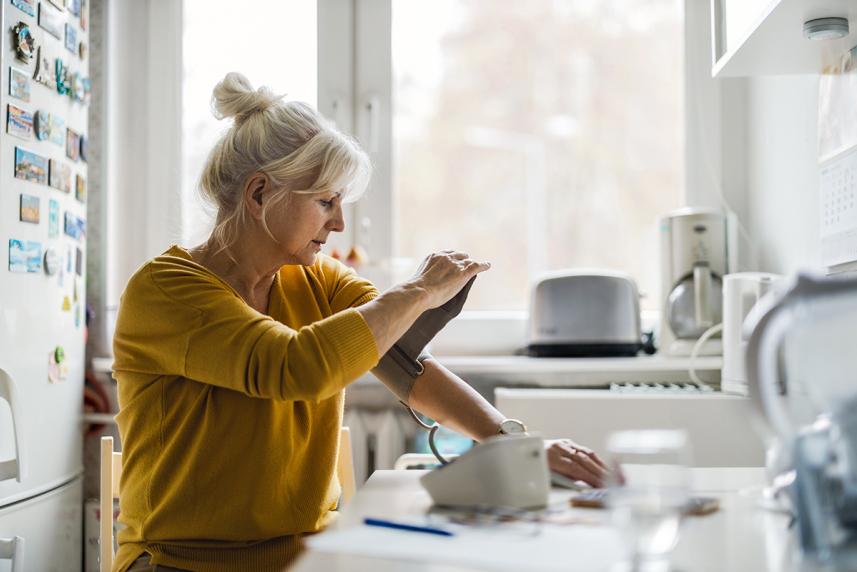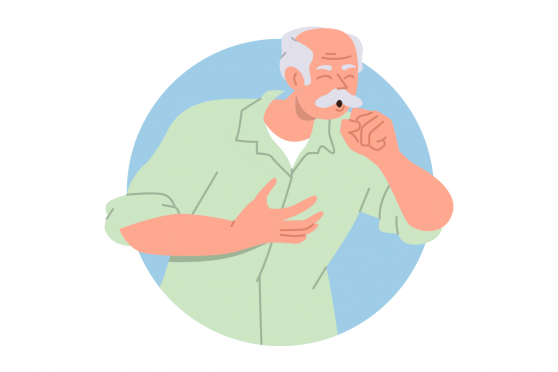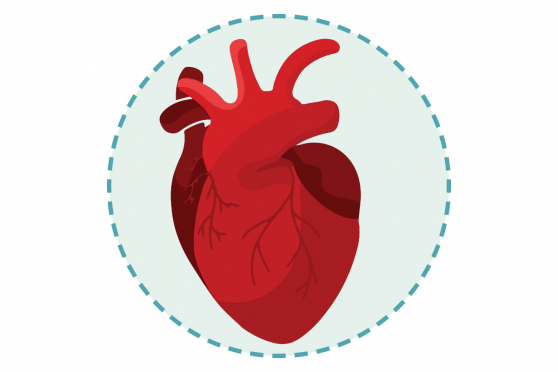Take your blood pressure the right way
Do you need to monitor your blood pressure at home? Here’s what you need to know about buying a cuff, taking measurements, and decoding those numbers.

If you’re not sure whether you have high blood pressure (HBP), it’s time to get checked. Your risk increases with age, according to Martha Gulati, M.D., of the American College of Cardiology. Genetics can also play a role in how high or low your blood pressure is, in addition to lifestyle factors, such as your diet, activity level, and if you’re a smoker.
But did you know that a doctor’s office isn’t the only place you can monitor your blood pressure? You can have your blood pressure checked at many pharmacies, such as Walgreens and CVS. And the American Heart Association (AHA) recommends that anyone with high blood pressure should monitor their readings at home. Here’s how to do it.
DID YOU KNOW?
Your blood pressure is composed of two numbers:
SYSTOLIC (top number): The pressure in your arteries when your heart beats
DIASTOLIC (bottom number): The pressure in your arteries when your heart is resting between beats
How to screen at home
You want to buy a monitor that will be accurate and easy for you to use. Avoid those that wrap around your wrist, Dr. Gulati says; they don’t always give you true readings. Instead, she recommends a cuff-based monitor. These can range from $25 to $100. The two most common types of monitors measure pressure via an arm cuff:
-
Traditional cuffs. Wrap the cuff around your upper arm, squeeze a rubber ball, and use a stethoscope to hear knocking sounds signaling systolic and diastolic pressure. This monitor is accurate, Dr. Gulati says, but only if it is used correctly.
-
Digital cuffs. After you put on the cuff, you press a button, and the device does the rest. Newer models wirelessly connect to a smartphone app and keep a record of all your readings. Some provide charts, making it easy to spot trends.
When in doubt, ask your doctor or pharmacist for their recommendations, and discuss the correct cuff size for you.
Understand what your blood pressure numbers mean
Follow the latest AHA guidelines below. Depending on your numbers, your doctor may recommend lifestyle changes or medication to help manage your blood pressure.
|
NORMAL |
ELEVATED |
HBP STAGE 1 |
HBP STAGE 2 |
|
SYSTOLIC |
SYSTOLIC |
SYSTOLIC |
SYSTOLIC |
|
Congratulations! |
Start to make |
Make lifestyle |
Make lifestyle changes, |
Strategies for accurate at-home readings
Blood pressure varies throughout the day. It can also spike in response to something you ate or sudden stress. Get the most accurate and consistent readings with tips from the AHA.
-
Measure at the same time every day. Reminder: Don’t take the measurement over clothes, and make sure the bottom of the cuff is directly above the bend in your elbow. Follow your monitor’s instructions.
-
Take multiple readings. When you measure, take two or three readings about one minute apart. Record your numbers so you can bring them with you to your next doctor’s appointment.
-
Leave a half-hour window. Avoid smoking, drinking caffeinated beverages, or exercising within 30 minutes of measuring your blood pressure.
-
Stay still and quiet. Empty your bladder and rest in silence for at least five minutes before taking your measurement.
-
Sit correctly. Choose a chair that has back support (for example, a dining room chair rather than a sofa). Place both feet on the floor and rest your arm on the table with your upper arm at the same level as your heart.
Easy ways to keep your blood pressure in check
High blood pressure is a condition with few symptoms but major health impacts. Use these tips to manage your blood pressure and protect yourself.
It is called a “silent killer” for good reason. High blood pressure often has no obvious symptoms. And though nearly half of Americans have high blood pressure, many are unaware, according to the Centers for Disease Control and Prevention.
Why does this matter? Untreated high blood pressure can lead to a host of serious conditions, including heart attacks, vision loss, stroke, and kidney disease.
High blood pressure can’t be cured. But you can manage it and live a full, healthy life. In addition to medications, your doctor might suggest lifestyle changes, like these:
- Stay at a healthy weight. Excess weight can put a strain on your heart. Talk to your doctor about what your target weight should be and discuss how to break that goal down into action steps.
- Fill your plate with wholesome foods. A diet low in saturated fats and sodium, and high in fiber, is good for your heart. Go online or to the library to find out about the DASH diet, which can lower blood pressure. Snack on fruits and limit added sugars.
- Be active. Movement is good for your whole body, both physically and mentally. It helps control blood pressure, too. The goal is to be active for at least 30 minutes a day. Start gradually; take a brisk walk or use the stairs. Every bit of movement helps.
Remember, the best way to manage high blood pressure is to know you have it, so be sure to check your numbers with your doctor.



